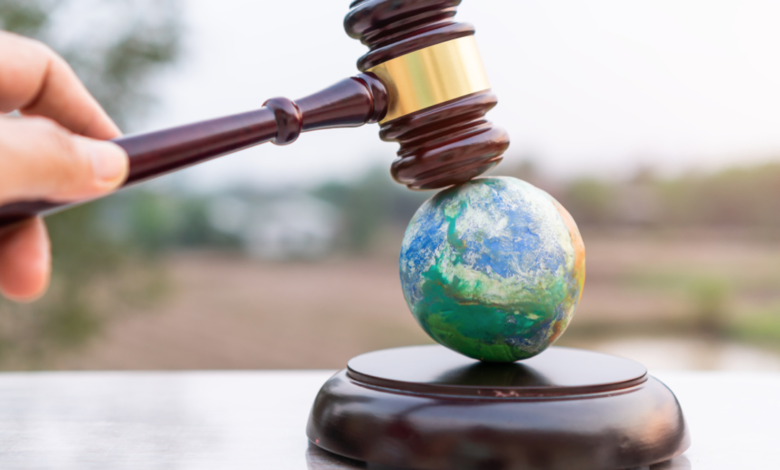Environmental Law Updates: Recent Regulations and Legal Battles
Recent Environmental Law Changes bring new regulations and legal battles. Explore the latest updates and their impact on environmental policy.

Updating environmental laws is essential to making sure that the rules controlling our ecosystems and natural resources remain relevant in the face of threats from pollution, climate change, and biodiversity loss. Significant adjustments to national, state, and international laws aiming at lowering emissions, safeguarding endangered species, and maintaining clean air and water are frequently included in these updates. Lawmakers, companies, and individuals all need to stay up to date on these changes because they have a direct influence on our economy, health, and environment.
Recent environmental law court cases have brought to light the continuous conflict between different parties, such as governmental organisations, businesses, and public interest organisations. Not only can landmark cases and lawsuits influence how present laws are enforced, but they also set the stage for future regulatory systems. This changing environment emphasises how crucial it is to keep up with the most recent advances in environmental law since they will affect our efforts as a group to create a future that is resilient and sustainable.
Environmental Law Updates
Overview of Key Regulatory Bodies
Understanding the key players in Environmental Law is essential. In the United States, the Environmental Protection Agency (EPA) is the primary federal body. Other important entities include state environmental agencies, international organizations like the United Nations, and non-governmental organizations (NGOs).
New Federal Regulations
Recently, there have been significant updates to federal Environmental Law aimed at addressing climate change and pollution.
Federal Regulations
The Clean Air Act Amendments
The Clean Air Act has undergone amendments to tighten emissions standards for vehicles and industrial plants. These changes aim to reduce greenhouse gases and improve air quality across the nation.
Changes to the Clean Water Act
Updates to the Clean Water Act focus on limiting pollutants in national waterways. New standards for wastewater treatment and stricter controls on industrial discharges are in place to protect aquatic ecosystems and public health.
Endangered Species Act Updates
The Endangered Species Act (ESA) has seen revisions to enhance protections for threatened species. These changes include expanding critical habitats and implementing new recovery plans.
State-Level Regulations
California’s New Emission Standards
California continues to lead in Environmental Law with its stringent emission standards for vehicles. The state aims to significantly reduce greenhouse gas emissions by promoting electric vehicles and renewable energy sources.
-
Wrongful Termination in Florida: When Can You Sue?April 10, 2025
-
California Overtime Laws: What Workers Need to KnowApril 9, 2025
New York’s Climate Leadership and Community Protection Act
New York’s groundbreaking legislation sets ambitious goals for reducing carbon emissions and increasing renewable energy usage. The act also emphasizes environmental justice by addressing pollution in disadvantaged communities.
Texas Water Conservation Regulations
In response to increasing droughts, Texas has implemented new water conservation regulations. These policies focus on sustainable water management practices and promote the use of reclaimed water.
International Environmental Policies
Paris Agreement Updates
The Paris Agreement remains a cornerstone of international climate policy. Recent updates include stronger commitments from participating countries to reduce carbon emissions and transition to renewable energy sources.
European Union Green Deal
The EU Green Deal outlines comprehensive measures to make Europe the first climate-neutral continent by 2050. Key initiatives include circular economy practices, biodiversity restoration, and zero pollution targets.
China’s Carbon Neutrality Goals
China has pledged to achieve carbon neutrality by 2060. This ambitious goal involves reducing reliance on coal, increasing renewable energy production, and enhancing energy efficiency.
Recent Legal Battles in Environmental Law
Landmark Cases
Landmark cases often set precedents and influence future environmental policies.
Massachusetts v. EPA
This case established that the EPA has the authority to regulate greenhouse gases under the Clean Air Act, marking a significant victory for climate change advocates.
Juliana v. United States
A group of young plaintiffs sued the U.S. government for failing to protect future generations from climate change. Although dismissed, the case drew significant attention to climate justice issues.
West Virginia v. EPA
This case challenges the extent of the EPA’s authority to regulate carbon emissions from power plants, with potential implications for federal climate policies.
Corporate Lawsuits
ExxonMobil Climate Fraud Case
ExxonMobil faced allegations of misleading investors about the financial risks of climate change. The case highlights the increasing scrutiny of corporate environmental practices.
BP Oil Spill Litigation
The Deepwater Horizon oil spill led to extensive litigation and significant fines for BP. The case underscored the importance of stringent environmental regulations and corporate accountability.
Volkswagen Emissions Scandal
Volkswagen was found to have installed software in diesel vehicles to cheat emissions tests. The scandal resulted in massive fines and emphasized the need for rigorous emissions testing and compliance.
Public Interest Litigation
Cases Filed by Environmental NGOs
Environmental NGOs play a crucial role in holding corporations and governments accountable. Recent cases have focused on issues like deforestation, pollution, and climate change.
Community-Led Lawsuits
Communities affected by environmental degradation are increasingly turning to the courts for justice. These lawsuits often address local pollution issues and demand remedial action.
Indigenous Rights and Environmental Justice
Indigenous communities are at the forefront of environmental justice litigation, seeking to protect their lands and resources from exploitation and degradation.
Impacts of Recent Regulations and Legal Battles
Environmental Impact
Stricter regulations and successful litigation contribute to cleaner air, water, and soil, benefiting ecosystems and public health.
Economic Impact
While some regulations may pose challenges for businesses, they also drive innovation and create opportunities in the green economy.
Social Impact
Environmental Law and legal victories often lead to improved quality of life, especially for vulnerable communities disproportionately affected by pollution.
The Role of Non-Governmental Organizations
Advocacy and Lobbying
NGOs advocate for stronger environmental policies and lobby governments to implement and enforce regulations.
Legal Support and Resources
Organizations like Earthjustice provide legal representation and resources to communities and groups fighting for environmental justice.
Public Awareness Campaigns
NGOs raise public awareness about environmental issues through campaigns, education, and outreach programs.
Future Trends in Environmental Law
Predicted Regulatory Changes
Experts predict increased regulations targeting plastic pollution, renewable energy incentives, and stricter emission controls.
Emerging Legal Theories
New legal theories, such as the rights of nature, are gaining traction and may influence future environmental litigation and policies.
Impact of Technological Advancements
Advancements in technology, such as AI and blockchain, are expected to enhance environmental monitoring and enforcement.
The Importance of Public Participation
Community Involvement in Policy Making
Public participation in environmental policy-making ensures that regulations reflect community needs and concerns.
Public Comments on Proposed Regulations
Encouraging public comments on proposed regulations helps create more effective and inclusive policies.
Grassroots Movements
Grassroots movements play a vital role in advocating for environmental justice and pushing for stronger regulations.
Read More: The Latest Trends in Intellectual Property Law: Key Cases and Rulings
Conclusion
Because of important court cases and new rules that highlight the pressing need for action and our rising awareness of environmental challenges, the field of environmental law is always changing. These reforms—which range from international agreements to modifications to federal and state laws—are crucial for combating climate change, safeguarding biodiversity, and promoting sustainable development. These laws are shaped by legal disputes, whether they are about public interest lawsuits or corporate responsibility, and they hold different parties accountable for their environmental impact.
It is more crucial than ever to keep up with changes to environmental law and to stay informed as we look to the future. To develop and implement efficient Environmental Law, the combined efforts of corporations, governments, non-governmental organisations, and private citizens are required. Gaining knowledge about current events and judicial decisions will help us to more effectively support laws that support a sustainable lifestyle and a healthier planet. Together, let’s confront the upcoming environmental problems and keep advocating for more robust Environmental Law.
FAQs
What are the recent changes to the Clean Air Act?
Recent changes to the Clean Air Act include tighter emissions standards for vehicles and industrial plants, aiming to reduce greenhouse gases and improve air quality.
How does public interest litigation affect environmental law?
Public interest litigation allows communities and NGOs to hold corporations and governments accountable for environmental harm, leading to stricter regulations and greater public awareness.
What is the significance of the Paris Agreement in international law?
The Paris Agreement is a landmark international treaty that commits countries to reducing carbon emissions and transitioning to renewable energy, aiming to limit global warming to well below 2 degrees Celsius.
How do state-level regulations differ from federal regulations?
State-level regulations can be more stringent than federal regulations and often address specific local environmental issues, reflecting regional priorities and conditions.
What role do NGOs play in environmental law?
NGOs advocate for stronger environmental policies, provide legal support to communities, and raise public awareness about environmental issues through education and outreach campaigns.










